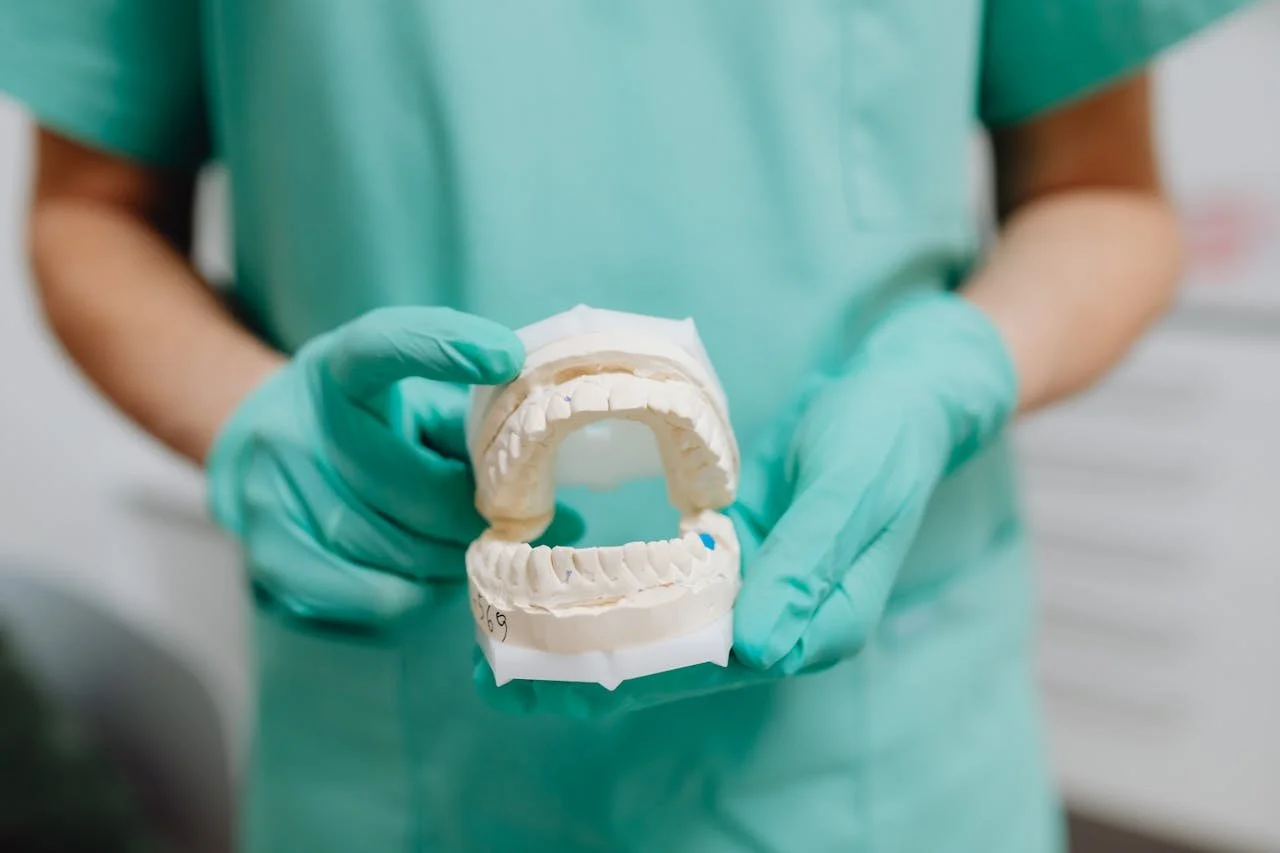Dental Inlay vs Onlay: Uses and Benefits
When you have an advanced cavity or moderate decay in an otherwise healthy tooth, you may require a treatment solution that falls somewhere between a dental filling and a crown. Both inlays and onlays fit the bill, but what’s the difference? In this dental restoration guide, we’ll compare an inlay vs an onlay to help you better understand what they are and when you might need one over the other.
What is a dental inlay?
A dental inlay is a custom-fitted restoration that replaces damaged or decayed tissue from a cavity. It’s used when the space left behind is too large for a traditional filling to replace. This type of prosthetic only covers the fissures of a molar or pre-molar, not the cusps.
What are dental inlays made of?
Because dental inlays reinforce the chewing surfaces of teeth, they must be strong enough to withstand regular use. Materials may include:
Gold: Highly durable, but more noticeable than other materials.
Porcelain or ceramic: Strong and stain-resistant, seamlessly blending with the surrounding teeth.
Composite resin: Inexpensive and tooth-colored, but less durable than gold and porcelain.
How long do dental inlays last?
With good oral hygiene habits, regular dentist visits, and a lack of excessive pressure, your dental inlay can last for years:
Gold: 20 to 30 years
Porcelain or ceramic: 10 to 15 years
Composite resin: 5 to 10 years
Benefits of dental inlays
When left untreated, a cavity will continue eating away at the tooth, eventually leading to a root canal or extraction. Dental inlays strengthen your natural tooth and help preserve optimal function for years to come. Your provider will custom-fit the inlay to align with the dimensions of the tooth and color-match the material to blend seamlessly with your teeth.
When compared to an onlay, an inlay is a more conservative approach to dental restoration. The placement procedure is less invasive, which puts less stress on the remaining tooth structure.
Related: Types of Dental Crowns and Their Costs
What is a dental onlay?
A dental onlay works just like an inlay, but it covers one or more cusps, sometimes extending over the entire chewing surface. They’re often referred to as “partial crowns” due to their design. Your dentist may suggest an onlay vs an inlay after a root canal or to correct more advanced decay.
What are dental onlays made of?
As with dental inlays, onlays can be made of gold, porcelain, or ceramic. Your dental care provider will help you choose the right material based on the location of the tooth, bite force, aesthetic considerations, and your budget.
How long do dental onlays last?
Although an onlay covers more of the tooth surface than an inlay, both restorations offer similar lifespans. Generally speaking, the average cost aligns with the longevity of the material used.
What are the benefits of dental onlays?
Durable and minimally invasive, a dental onlay offers the same benefits as an inlay, only it’s slightly larger. These restorative devices seal the cavity or hole, keeping harmful bacteria from further damaging the tooth.
Related: Dental Implants vs Dentures: How To Choose
Dental inlay vs onlay vs crown
Wondering how inlays and onlays compare to dental crowns? Here’s a breakdown of these three dental restorations:
Surface area and size
A dental inlay covers the smallest area and preserves the greatest amount of the natural tooth structure. An onlay protects more of the surface to protect weakened tissue without removing it. Both are conservative when compared to a crown, which covers the entire surface of the tooth above the gumline and requires removal of substantially more dental tissue.
Treatment use
Dental inlays are used to correct moderate damage to the inner portion of the tooth. Onlays may be required for more severe decay that isn’t advanced enough for a crown.
Crowns are often used as an alternative to extraction. When the foundation is salvageable, a crown is placed on top of the remaining tooth. Crowns are the most invasive and advanced of these semi-permanent solutions.
Cost
As the degree of tooth decay increases, so does the price point of your treatment. For example, a gold onlay will be more expensive than a composite inlay, but both are generally more affordable than a crown, which requires at least one follow-up appointment.
Your dental insurance should cover part of your expenses. Keep in mind that a credit card payment may cost more than cash, as they can incur additional fees.
Related: All About Front Tooth Crowns and How They Differ
Renew your smile and regain your confidence at Coral Reef Dental!
Whether you’re comparing inlay vs onlay treatments or searching for the right provider for your bi-annual cleanings, the team at Coral Reef Dental is here to help! We offer comprehensive dental services, from routine exams to specialty treatments.
Contact us today to schedule an appointment with our compassionate providers. We look forward to becoming an important part of your oral health!


